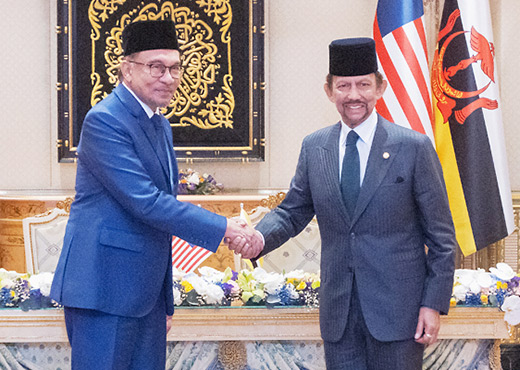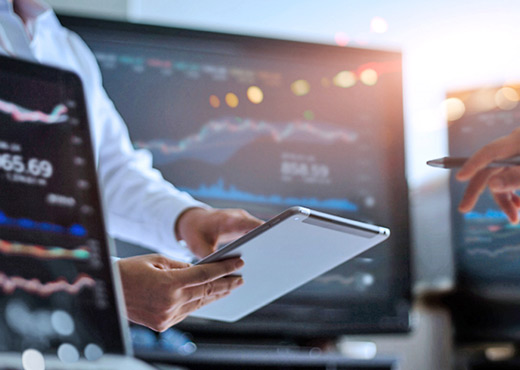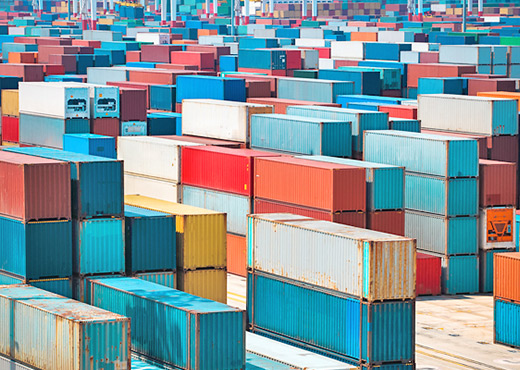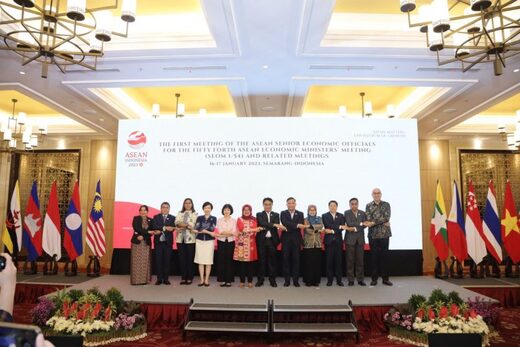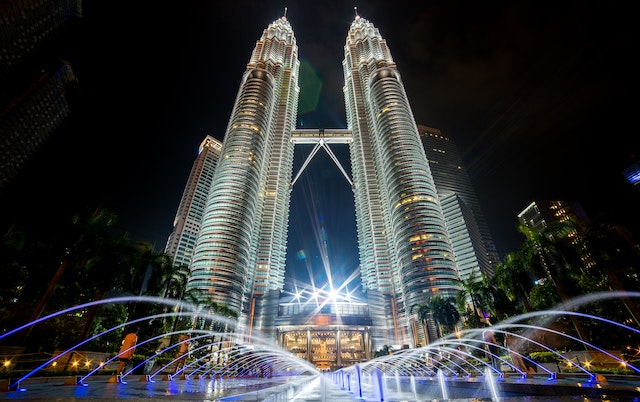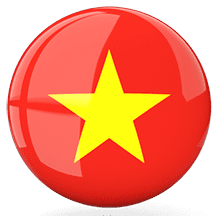The value of Cambodian trade with the nine other ASEAN countries reached $16.053 billion in 2022 – up 1.4 per cent from $15.838 million in 2021 – accounting for a 30.62 per cent share of the Kingdom’s $52.425 billion in total foreign trade for the year, down from a 32.99 per cent share in 2021, according to a Ministry of Commerce report.
The report, issued in conjunction with the ministry’s January 30-31 annual meeting, indicated that Cambodian exports to the nine countries rose by 13 per cent from $2.914 billion in 2021 to $3.297 billion last year, making up 14.7 per cent of the $22.483 billion in total exports.
On the other hand, Cambodian imports from these markets slid by 1.3 per cent from $12.924 billion in 2021 to $12.756 billion last year, comprising 42.60 per cent of the $29.942 billion in total imports.
Vietnam and Thailand alone represented 67.28 per cent of 2022 Cambodian trade with the nine other ASEAN countries, at $6.136 billion and $4.664 billion, respectively, rising by 19.64 per cent and 14.22 per cent on a yearly basis.
Aside from Cambodia, the other nine ASEAN countries are: Brunei, Indonesia, Laos, Malaysia, Myanmar, the Philippines, Singapore, Thailand and Vietnam.
Speaking to The Post on February 5, Cambodia Chamber of Commerce (CCC) vice-president Lim Heng commented that, due to geographical proximity, ASEAN countries are among the top buyers of Cambodian agricultural products, drawing attention to the fact that more than 660 million people live in the region – including the Kingdom’s population.
Of note, Worldometer on February 5 had the ASEAN population at nearly 685 million, a figure it says is based on elaboration of the latest UN data.
Heng claimed that its bilateral free trade agreements (FTA) with China and South Korea have made Cambodia a more powerful magnet for investors in the production of export goods for ASEAN member states.
An FTA is an international treaty between two or more economies designed to reduce or eliminate certain barriers to imports and exports among them, generally while safeguarding safety, security, health and other legitimate regulatory objectives. Such a pact can also serve to facilitate and promote greater economic ties among signatories in areas such as investment and intellectual property protection.
Heng added that the Kingdom is also increasingly acting as a distribution centre for Chinese and South Korean goods destined for the region.
“ASEAN has been an important market for Cambodia, especially since 2015, when member countries began implementing ‘ASEAN economic integration’, despite some setbacks during the Covid-19 pandemic,” he said, predicting that Cambodian trade with regional countries “will be more active” going forward.
For full article, please read here
Author: Hin Pisei
Source: The Phnom Penh Post
“Cambodia has a very special place in France’s relations with the ASEAN countries,” said Olivier Becht, Minister Delegate for Foreign Trade, Economic Attractiveness and French Nationals Abroad, attached to the Minister for Europe and Foreign Affairs of the French Republic, at the French Embassy on Wednesday.
“We have a very long, friendly relationship. We would like to revitalise our relationship, especially in the economic field,” Becht said at the end of his two-day visit that started on January 24. “There are already many French companies operating in Cambodia,” he said.
Pointing to the 1.15 billion euros annual bilateral trade, Becht said, “These numbers remain modest compared to the capacities and the potential of our two economies.”
Earlier in the day, the French Minister and a business and investment delegation had a meeting with Cambodia Prime Minister Hun Sen.
“We had the honour of being received by the Prime Minister this morning. We discussed investment opportunities in sectors where France has the expertise, particularly in the field of renewable energies, sustainable urban mobility and the food industry,” he said.
“I am convinced that Cambodia can be a gateway for France to the ASEAN countries, as part of France’s strategy for the Indo-Pacific region.
The Minister in a write-up ahead of the visit termed the Indo-Pacific as an area of great economic, technological and environmental challenges and a driver of the global economy, in which Cambodia and France are both stakeholders. “I believe in the dynamism of Cambodia and Cambodian youth to keep the ties of friendship alive,” he said.
On the recent global supply chain crisis, Becht said, “The crises have shown the fragility of our supply chains. We must therefore diversify our suppliers. This opens up important opportunities for ASEAN countries and French investors, particularly in Cambodia.”
For Full Article, Please read here
Author: Prakash Jha
Source: Khmer Times
His Majesty Sultan Haji Hassanal Bolkiah Mu’izzaddin Waddaulah ibni Al-Marhum Sultan Haji Omar ‘Ali Saifuddien Sa’adul Khairi Waddien, Sultan and Yang Di-Pertuan of Brunei Darussalam and Prime Minister of Malaysia Dato’ Seri Anwar Ibrahim yesterday witnessed the signing ceremony of the memorandum of understanding (MoU) between the Malaysian Investment Development Authority (MIDA) and the Brunei Investment Agency (BIA) at Baitul Mesyuarah, Istana Nurul Iman following a fruitful four-eye meeting with the visiting Malaysian Premier.
Signing on behalf of the Government of His Majesty the Sultan and Yang Di-Pertuan of Brunei Darussalam was BIA Acting Managing Director Haji Sofian bin Mohammad Jani, while the Government of Malaysia was represented by MIDA Chief Executive Officer Datuk Wira Arham Abdul Rahman.
The MoU provides an initial understanding for both parties to hold negotiations towards the implementation and preparation of further agreements on bilateral investment that can be carried out by certain parties between Brunei and Malaysia. The MoU will also include bilateral cooperation and investment in the downstream oil and gas sector, digital economy, smart manufacturing, smart agriculture, artificial intelligence, tourism and the halal food industry.
Source: Borneo Bulletin
Read the full article here
The Asean+3 Macroeconomic Research Office (AMRO) called on agencies in the Sultanate to expedite the implementation of foreign direct investment (FDI) projects in priority sectors, such as food, information and communications technology (ICT) and tourism.
The authorities’ proactive approach on climate change should also continue, supported by appropriate budget allocation. These are the policy recommendations AMRO made during an annual consultation visit to Brunei Darussalam from November 26 to 30, 2022.
AMRO added that fiscal incentives can also be considered, for enterprises participating in climate change adaptation and mitigation. In other areas, such as the labour market, and in doing business environment, it is encouraging to note that various initiatives have been put in place, to address long-standing structural challenges.
AMRO added that the strong oil and gas export receipts from high oil prices have helped to restore Brunei Darussalam’s fiscal position.
However, looking beyond the immediate terms of trade gains, continuing efforts to further diversify revenue sources would be desirable to shield the public finance against volatility and procyclicality.
The authorities should also continue to press ahead with expenditure reforms, thereby strengthening fiscal consolidation in order to anchor medium-term fiscal sustainability.
Since May 2022, monetary conditions have tightened, given the upward adjustments in the central bank’s standing facility deposit and lending rates.
Source: Borneo Bulletin
Read the full article here
After the setback to growth last year due to the outbreak of the Delta variant of COVID-19, economic activities in Brunei Darussalam are gradually picking up, particularly in the non-oil and gas (O&G) sector.
High vaccination rates have allowed containment measures and border restrictions to be lifted, enabling fuller economic re-opening. Higher global energy prices have also benefitted the Sultanate, helping to improve the external position and restore fiscal buffers.
This preliminary assessment was made by the ASEAN+3 Macroeconomic Research Office (AMRO) after its annual consultation visit to Brunei from November 26 to 30, 2022.
While the ongoing rejuvenation effort in the O&G sector has an effect on growth, the outcome would result in an improved asset reliability and production availability.
Continuing diversification in the non-O&G sector, including the nurturing of new areas of growth (such as digitalisation and green investment), will help foster resilience and put the economy on a stronger footing in the long run.
The discussions mainly focussed on the outlook for the post-pandemic recovery, global spillover risks from the conflict in Ukraine and tightening global financial conditions, as well as longer-term development challenges.
“The highly comprehensive COVID-19 vaccination programme has enabled the Sultanate to shift to an endemic phase, allowing fuller economic re-opening and the recovery of economic activities, particularly in the services sector.”
AMRO also said, “Despite this positive development, the economy is expected to register a negative growth of 1.2 per cent in 2022, weighed down by the decline in the upstream O&G production,” said Tan. “Nonetheless, the diversion of domestic gas supply to the downstream activities has contributed to stronger performance of the non-O&G sector, helping to support growth.”
Inflation has risen to a multi-year high, mainly on rising global food prices. The conflict in Ukraine has impacted global commodity prices and disrupted supply chains. While global commodity prices have fallen in recent months, inflation is likely to remain high at 3.7 per cent in 2022.
Source: Borneo Bulletin
Read the full article here
The merchandise trade volume between Cambodia and Indonesia totalled $948.533 million in 2022, surging by 48.27 per cent over a year earlier, with Cambodian imports constituting a 96.12 per cent share, inching up by 1.08 percentage points on a yearly basis, according to the General Department of Customs and Excise (GDCE).
In 2022, Cambodian goods exports to and imports from Indonesia amounted to $36.839 million and $911.694 million, respectively, up 15.9 per cent and 49.96 per cent year-on-year, expanding the Kingdom’s trade deficit with the archipelago nation by 51.84 per cent to $874.854 million, from $576.167 million in 2021.
Last month alone, the Cambodian-Indonesian merchandise trade volume was to the tune of $118.29 million, up 63.8 per cent from $72.20 million in December 2021 and up 102.9 per cent from $58.30 million in November 2022.
The Kingdom’s exports accounted for just over $3.5 million, up 33 per cent year-on-year but down 12 per cent month-on-month, while imports came to nearly $114.8 million, up 65.0 per cent year-on-year and up 111.3 per cent month-on-month.
December was the best month for both two-way trade and Cambodian exports to Indonesia last year, with May in second-place recording $96.20 million and $94.60 million, while the top two for imports were September and July at $5.19 million and $4.16 million, GDCE statistics indicate.
The Kingdom’s free trade agreements (FTA) have become a big draw for Indonesian and other foreign investors, particularly the bilateral deals with China and South Korea, as well as the Regional Comprehensive Economic Partnership (RCEP), Cambodia Chamber of Commerce vice-president Lim Heng told the Post on January 19.
For Full Article, Please read here
Author: Hin Pisei
Source: The Phnom Penh Post
Source: The Malaysian Reserve





